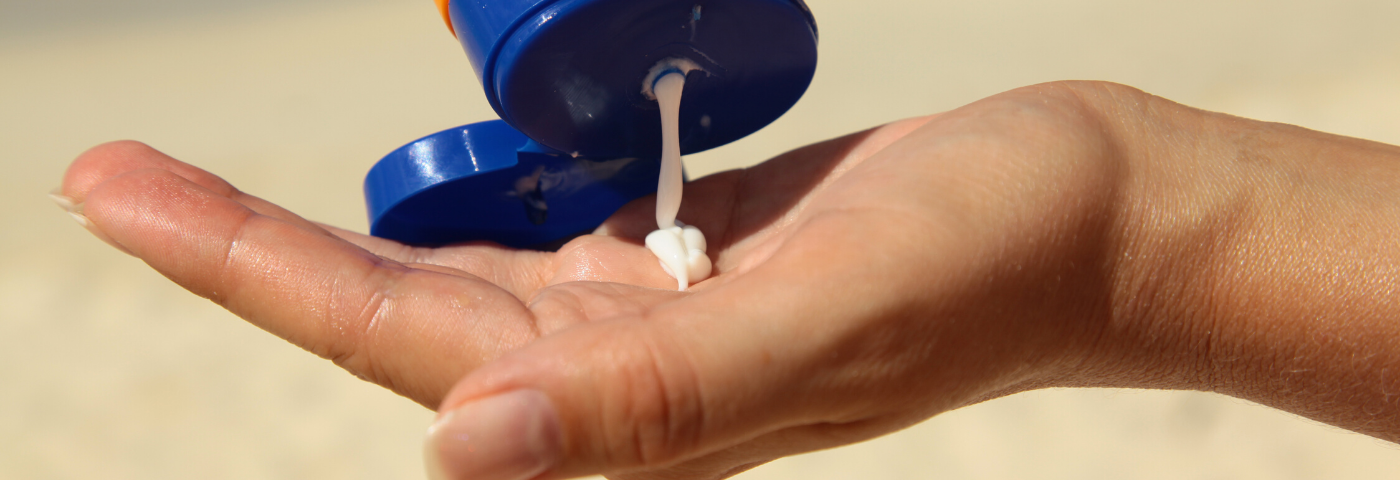Abstracted Section: Harry’s Cosmeticology, 9th Ed
SUNSCREENS & SELF-TANNING LOTIONS
Charles Warren
Sunshine contains both UV A and UV B rays, which are harmful to the living cells in the skin. UV B radiation is the cause of sunburn ranging from cellular damage to painful skin reddening and in some cases blistering and peeling. UV A radiation is related to the degradation of the cells and destruction of collagen and elastin cells leading to premature ageing of the skin with all of the attendant negative effects— wrinkling, leathery skin appearance, etc. Sunscreens are chemicals that absorb the UV radiation and prevent the radiation from reaching the cells within the skin.
In the United States, sunscreens are regulated under an OTC monograph that dictates allowable sunscreens and levels, testing requirements, claims, labelling requirements, etc. Other countries throughout the world have their own regulations related to allowable sunscreens, levels, claims, label requirements, etc., and all of these requirements are not consistent. Sunscreens, levels, and claims allowed in one country may not be allowed in another. Similarly, countries may have different required testing for claims, stability, safety, etc. Formulators should consult the appropriate regulatory/legal groups prior to initiating formulation to determine what is and is not allowed in the market(s) of interest, what testing (functionality, analytical, stability, safety, etc.) may be required and any special registrations or preapprovals needed.
Sunscreens for the body are usually found in the following forms: cream/ lotion, non-pressurized pump spray, or pressurized aerosol spray. The sunscreen ingredients for these products are chosen to: a) deliver the desired SPF rating; and b) be stable in the base formula for the desired form. The combination of and concentration of the individual sunscreens are what provide the desired SPF rating. Commonly employed sunscreens are: avobenzone, octisalate, oxybenzone, homo-salate, octocrylene, titanium dioxide, and zinc oxide (the latter two actually block- ing the UV radiation). The allowable levels of each sunscreen are indicated in the sunscreen monograph. Additional sunscreens are also included in the monograph. Suppliers of the various sunscreens can be very helpful in suggesting appropriate combinations and levels achieve a particular SPF rating.
The creams and lotions are generally oil-in-water emulsions, composed of a water phase including water, glycerin, a thickening polymer (e.g., carbomer or the copolymers, such as acrylates/octylacrylamide copolymer), glycerin, C12–15 alcohol benzoate, and so on. The oil phase can include fatty alcohols (e.g., cetyl alcohol), fatty acids (e.g., stearic acid), dimethicone, distearyldimonium chloride, cyclopentasiloxane, and so on. The emulsification system, usually incorporated in the oil phase, is commonly a mixture of ethoxylated fatty alcohols (e.g., ceteth-20), and so on. The emulsion must be aesthetically acceptable both from visual and tactile perspective and must be stable, ensuring the stability of the entire formula, sunscreens included, to pass the requirements for expiration-date testing and functional delivery of the claimed SPF. It is not unusual to try multiple emulsions and blends to develop an acceptable formula that remains stable with the sunscreens incorporated.
Both pump sprays and pressurized aerosol sprays have similar base formulas, the difference being the use of the propellants in the pressurized aerosol forms. These forms are usually hydro-alcoholic solutions of silicones (e.g., dimethicone, cyclopentasiloxane), solvents/conditioners (e.g., glycerin), and other materials to assist in the dispensing of the sunscreens and provide aesthetically pleasing skin feel and uniform spreading of the sunscreen when applied. Propellants employed in the pressurized aerosol sprays include butane, isobutane, propane, and hydrofluorocarbon 152a, for VOC regulation.
Self-Tanning Lotions
During the late 90s and after, self-tanning lotion/sprays became popular. These formulas all rely on the chemical dihydroxy acetone (1,3 –hydrox-2-propanone). DHA reacts with the proteins in the skin to form a brown color approximately 1–2 hours after application. The concentration of the DHA (2–12%) dictates the dark- ness of the tan. The resultant “tan” is a purely visual, cosmetic effect, providing no UV protection to the skin as does the natural formation of melanin in an unaided exposure to the sun. However, the development of a “tan” is accomplished without exposure to the other harmful effects of UVA and UVB radiation.
DHA can be formulated into creams/lotions (oil-in-water) emulsions and sprays (nonpressurized and pressurized). Formulas for these forms are similar to formulas already discussed in Hand and Body Lotions and Sunscreens. The aesthetics of the cream/lotion, the skin feel during and after application, and the development of the desired shade are the issues of importance to the formulator. Incorporation of erythrulose in the formula can impart depth and richness to the final shade obtained.

